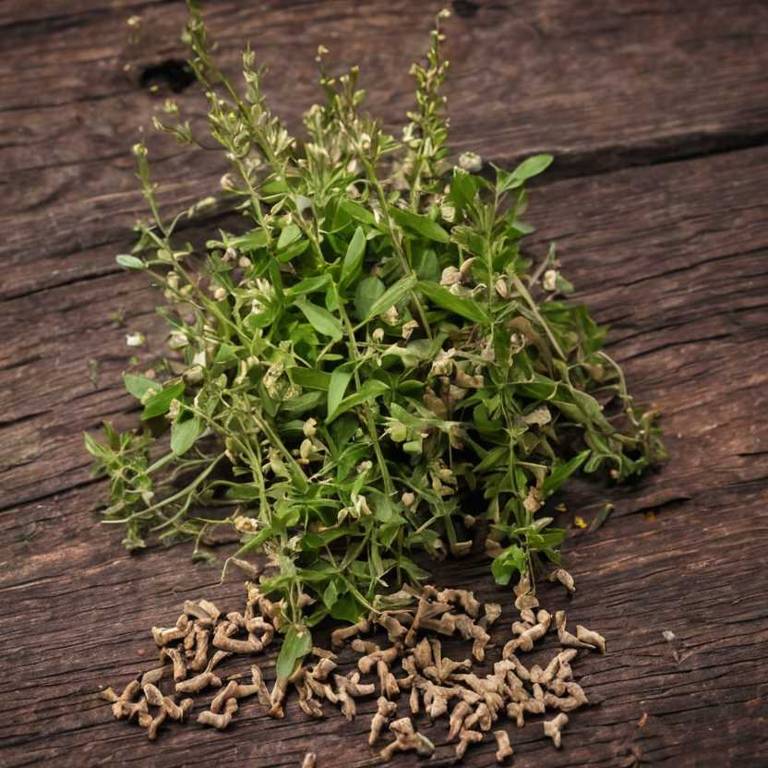By Leen Randell
Updated: Jul 07, 2024
What Are The Medicinal Properties Of Polygonum Multiflorum (Fo-Ti)?

Polygonum multiflorum, also known as fo-ti, has health benefits such as anti-aging, antioxidant, and anti-inflammatory properties.
Its medicinal constituents include flavonoids, phenolic acids, and alkaloids, which contribute to its therapeutic effects. Fo-ti is prepared as a decoction, capsule, or tea, and is often used in traditional Chinese medicine to treat conditions such as anemia, fatigue, and memory loss. However, excessive consumption may lead to gastrointestinal side effects and interactions with other medications.
To use fo-ti safely, individuals should consult with a healthcare professional and follow recommended dosages.
This article explains the health benefits, active constituents, medicinal preparations, possible side effects, and precautions related to Polygonum multiflorum .
- What are the health benefits of Polygonum multiflorum ?
- What are the active constituents of Polygonum multiflorum ?
- What are the medicinal preparations of Polygonum multiflorum ?
- What are the possible side effect of using Polygonum multiflorum improperly?
- What precautions to take when using Polygonum multiflorum medicinally?
What are the health benefits of Polygonum multiflorum ?
Polygonum multiflorum, also known as fo-ti, has health benefits such as reducing inflammation, improving cardiovascular health, and enhancing antioxidant defenses.
Studies have shown that it has anti-aging properties, improving skin elasticity and reducing wrinkles. Additionally, it may help to lower cholesterol and triglyceride levels, making it a potential natural remedy for managing heart disease and promoting overall well-being.
Its benefits are attributed to its rich content of antioxidants and flavonoids.
Here's a detailed article about the 10 health benefits of Polygonum multiflorum .
What are the active constituents of Polygonum multiflorum ?
Polygonum multiflorum, also known as fo-ti, has active constituents such as emodin, anthraquinone, and anthocyanins, which contribute to its medicinal properties.
The plant is rich in antioxidants, flavonoids, and phenolic acids, which have been shown to have anti-inflammatory and anti-aging effects.
Additionally, fo-ti contains a range of minerals, including iron, calcium, and potassium, making it a valued herb in traditional Chinese medicine for promoting vitality and longevity.
Here's a detailed article about the 10 active constituents of Polygonum multiflorum .
What are the medicinal preparations of Polygonum multiflorum ?
Polygonum multiflorum, also known as fo-ti, has medicinal preparations such as dried roots, pills, capsules, and extracts.
The roots are rich in antioxidants, flavonoids, and alkaloids, which are believed to promote longevity, vitality, and fertility. They are also used to treat fatigue, anemia, and skin problems.
Traditional Chinese medicine often uses fo-ti preparations to nourish the liver and kidneys, improve cardiovascular health, and enhance immune function.
Here's a detailed article about the 10 medicinal preparations of Polygonum multiflorum .
What are the possible side effect of using Polygonum multiflorum improperly?
Improper use of Polygonum multiflorum, also known as fo-ti, increases the chances of experiencing side effects such as nausea, vomiting, and diarrhea.
High doses may also cause liver damage and kidney problems, while prolonged use can lead to an increased risk of bleeding and bruising due to its anticoagulant properties.
In addition, some individuals may experience allergic reactions, such as skin rashes and itching.
Here's a detailed article about the 10 most common side effects of Polygonum multiflorum .
What precautions to take when using Polygonum multiflorum medicinally?
Before using Polygonum multiflorum, also known as fo-ti, for medicinal purposes, you must take precautions such as consulting with a healthcare professional to determine the correct dosage and potential interactions with other medications.
Pregnant or breastfeeding women should avoid using fo-ti, as it may cause uterine contractions or affect milk production.
Additionally, individuals with bleeding disorders or those taking anticoagulant medications should exercise caution when using fo-ti.
Here's a detailed article about 10 precautions to take when using Polygonum multiflorum .